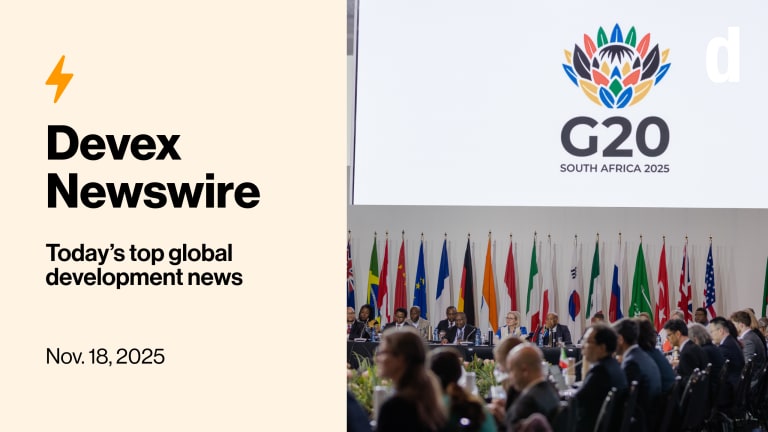
Russia is targeting agricultural infrastructure, using hunger as a weapon in the war in Ukraine, the European Union’s agriculture boss said Wednesday.
“[The] only one interpretation is that they want to create hunger and to use this method as a method of aggression,” Janusz Wojciechowski told reporters, agreeing that it resembled the starvation tactics employed by Soviet Russia against Ukraine and Kazakhstan in the 1930s, which led to millions of deaths.
“We are only seeing the tip of the iceberg of the shock waves the war will sent to the most vulnerable countries in Africa which are still struggling with the aftershocks of the pandemic.”
— Emily Wigens, EU director, ONE CampaignThe comments came at the launch of the European Commission’s policy on “Safeguarding food security and reinforcing the resilience of food systems,” which the EU executive couched partly as a response to the war in Ukraine.
While it said there is no immediate threat to food security in the EU itself, the commission noted, “Ukraine accounts for 10% of the world wheat market, 13% of the barley market, 15% of the maize market, and is the most important player in the market for sunflower oil (over 50% of world trade). As far as Russia is concerned, these figures are respectively 24% (wheat), 14% (barley) and 23% (sunflower oil). North Africa and the Middle East import over 50% of their cereal needs from Ukraine and Russia.”
“It is fundamental from a geo-strategic point of view that the EU contribute to covering the production gap to address the expected global shortage in wheat,” the policy stated.
Commission President Ursula von der Leyen announced Tuesday that €2.5 billion ($2.7 billion) would be set aside until 2024 to assist regions affected by food insecurity. In Ukraine itself, the commission announced €330 million in grants Wednesday to support access to basic goods and services, including food.
Asked at a press conference if the EU intended to pledge more money to the World Food Programme and which EU states should provide more funds to stave off a looming aid crisis — foreshadowed by WFP chief David Beasley in Brussels Tuesday — commission Executive Vice-President Valdis Dombrovskis was noncommittal.
“We stand ready to ensure that humanitarian aid is available for directly affected people and we are willing to coordinate this work internationally,” Dombrovskis said, referring to the need to work with the Food and Agriculture Organization, WFP, the G-7, and G-20.
Hanne Louise Knaepen, head of the climate and green transition program at the ECDPM think tank, pointed out on Twitter that the commission plan “does not clearly outline when and how more food will be exported to the affected regions.”
Oxfam warned this month that Eritrea, for instance, sourced all of its wheat imports from Russia, at 53%, and Ukraine, at 47%, last year. Somalia sourced more than 90%, and Yemen sources almost half of its wheat needs from Russia and Ukraine, Oxfam noted.
“With about 50% of Africa’s wheat imports coming from Ukraine and Russia (more than 70% for countries like Eritrea, Egypt, Benin, Sudan, Djibouti and Tanzania), we are only seeing the tip of the iceberg of the shock waves the war will sent to the most vulnerable countries in Africa which are still struggling with the aftershocks of the pandemic,” Emily Wigens, EU director at the ONE Campaign told Devex by email. “Increasing food prices and supplies shortages will exacerbate a food crisis that is already affecting millions of the world’s most vulnerable people.”

More reading:
► Ukraine says war damage exceeds $100B, warns of food crisis
► 'A heck of a problem': WFP chief warns of aid crisis amid Ukraine war
► Ukraine crisis expected to deepen Horn of Africa's drought devastation






